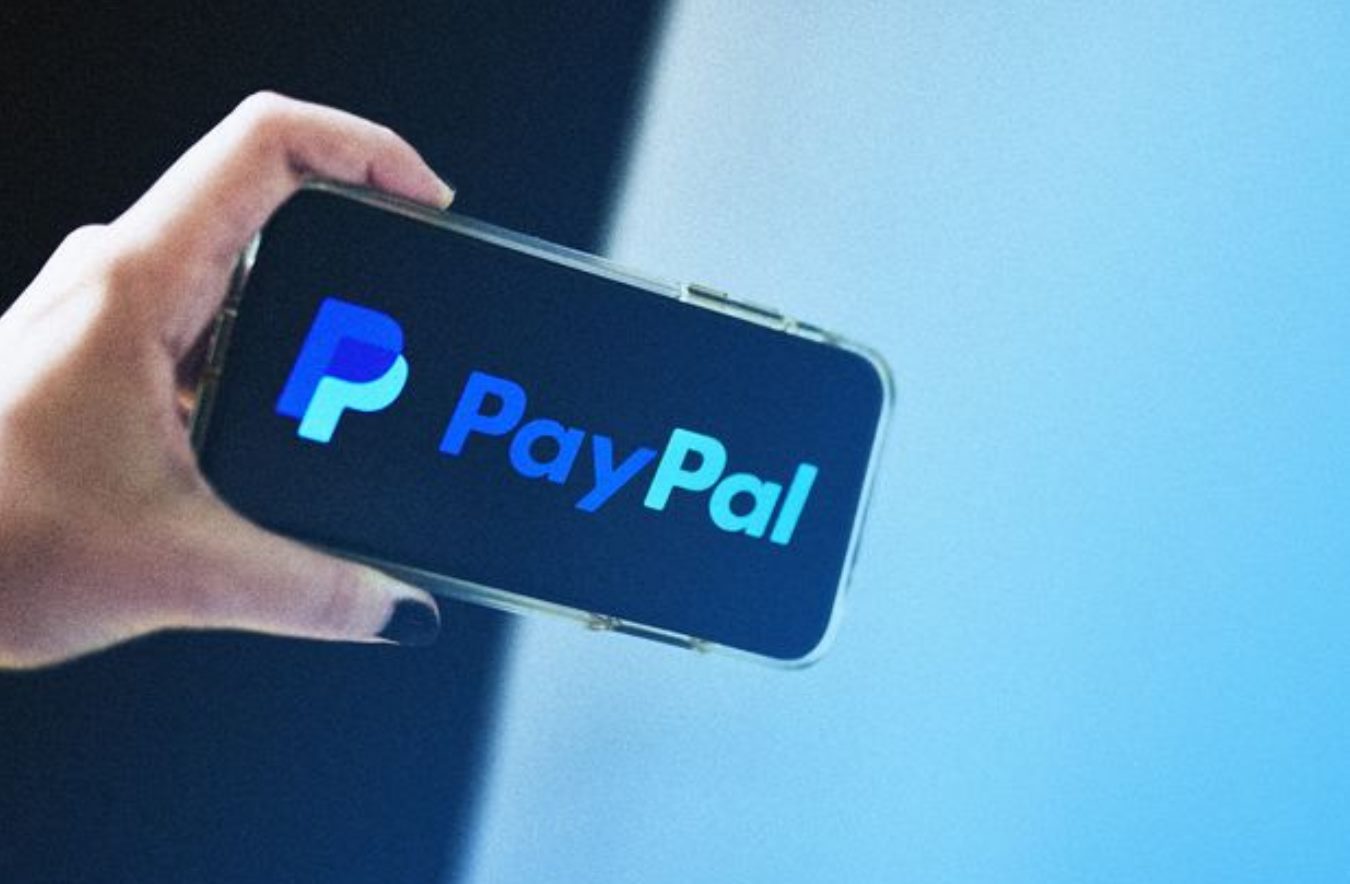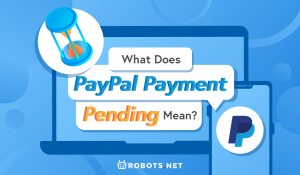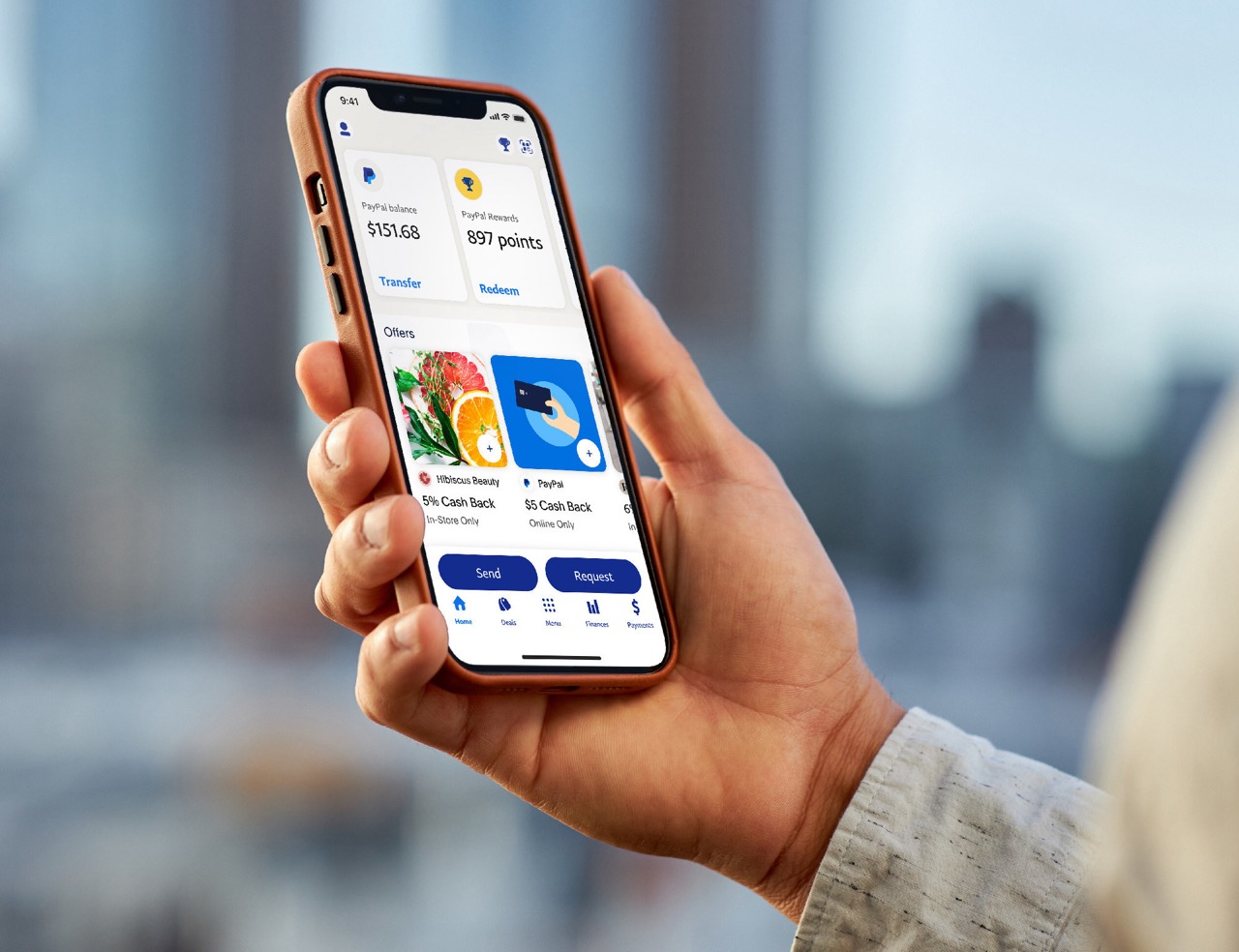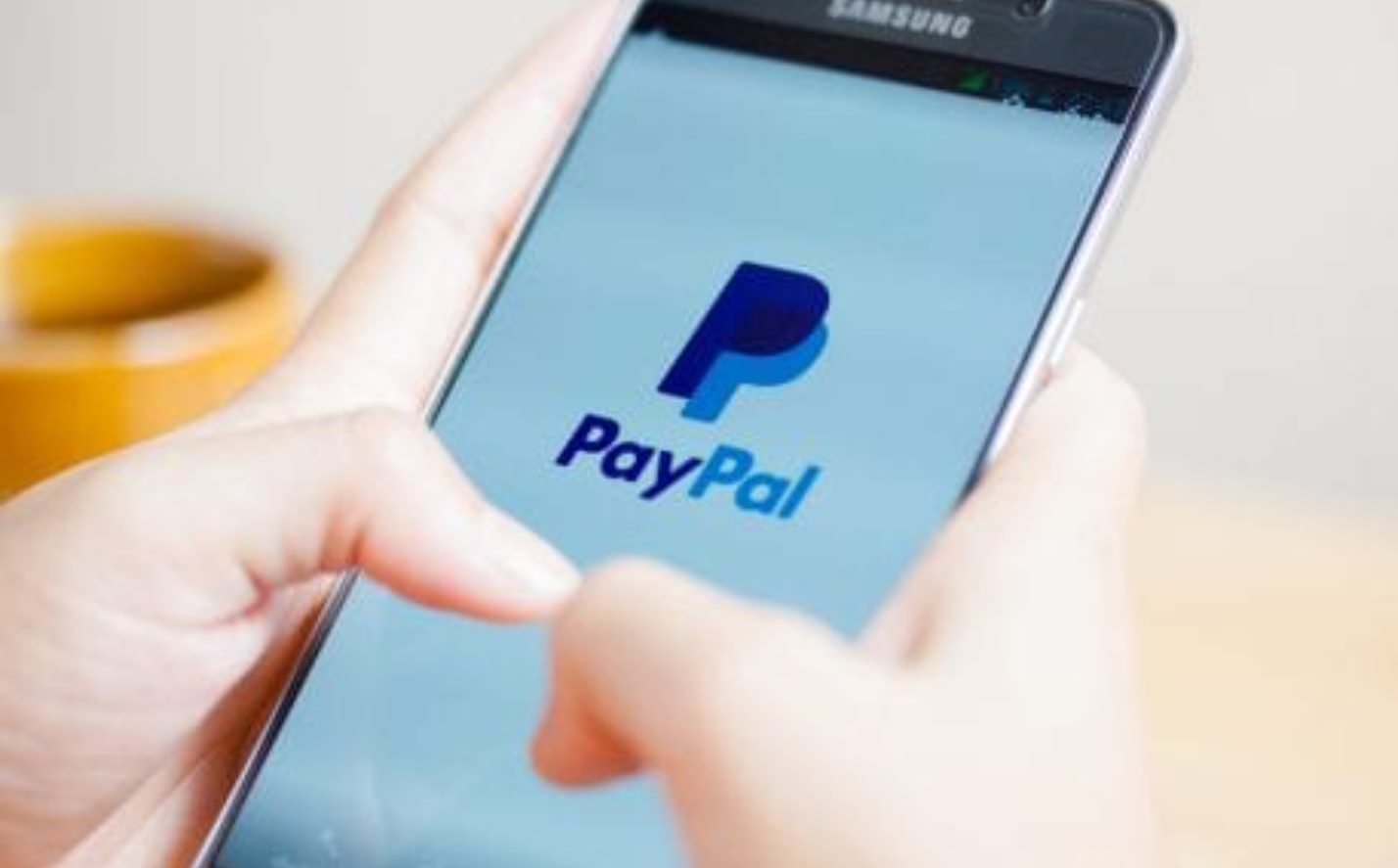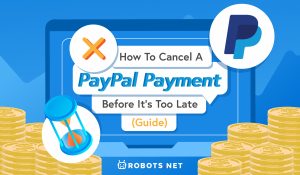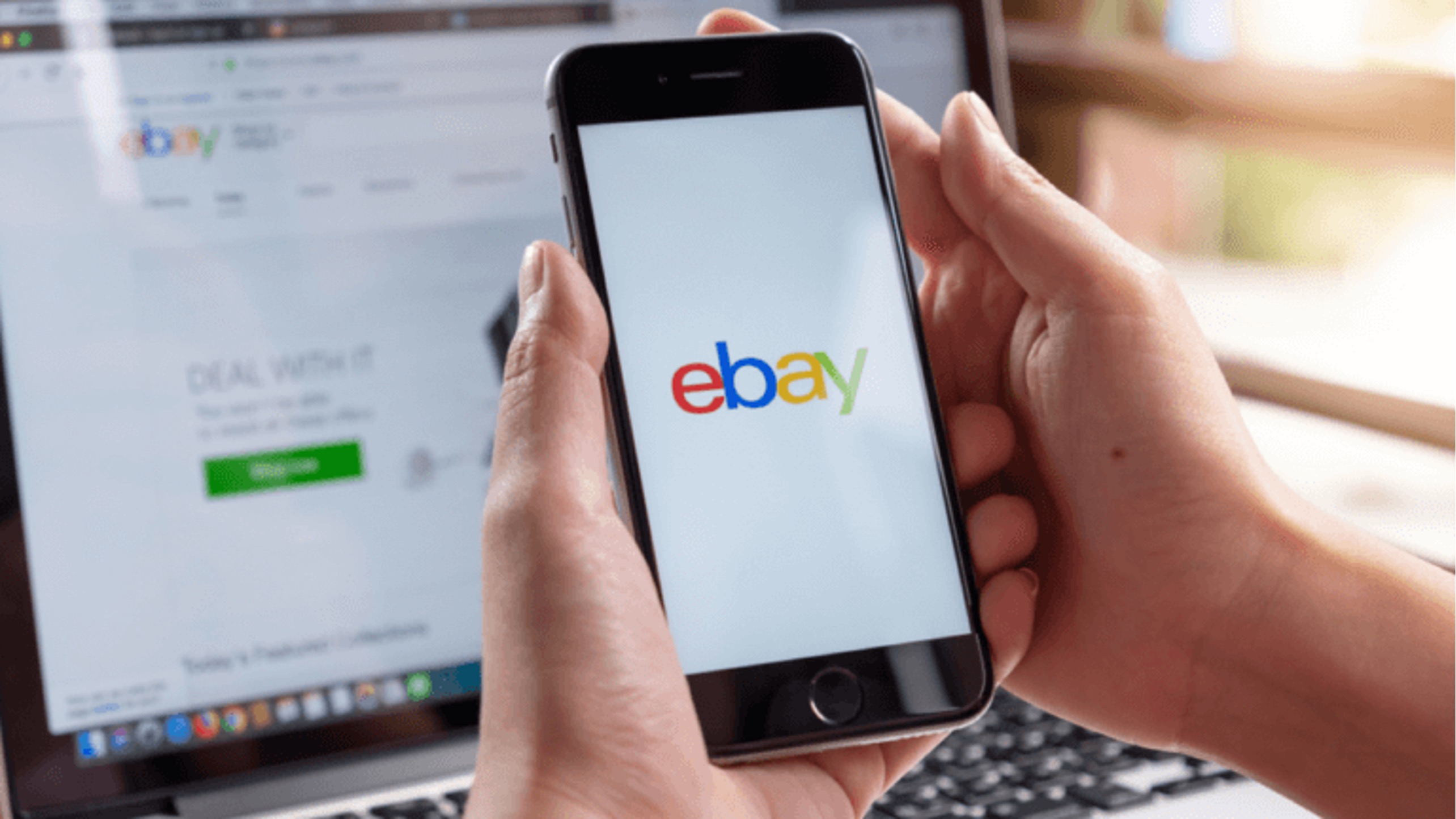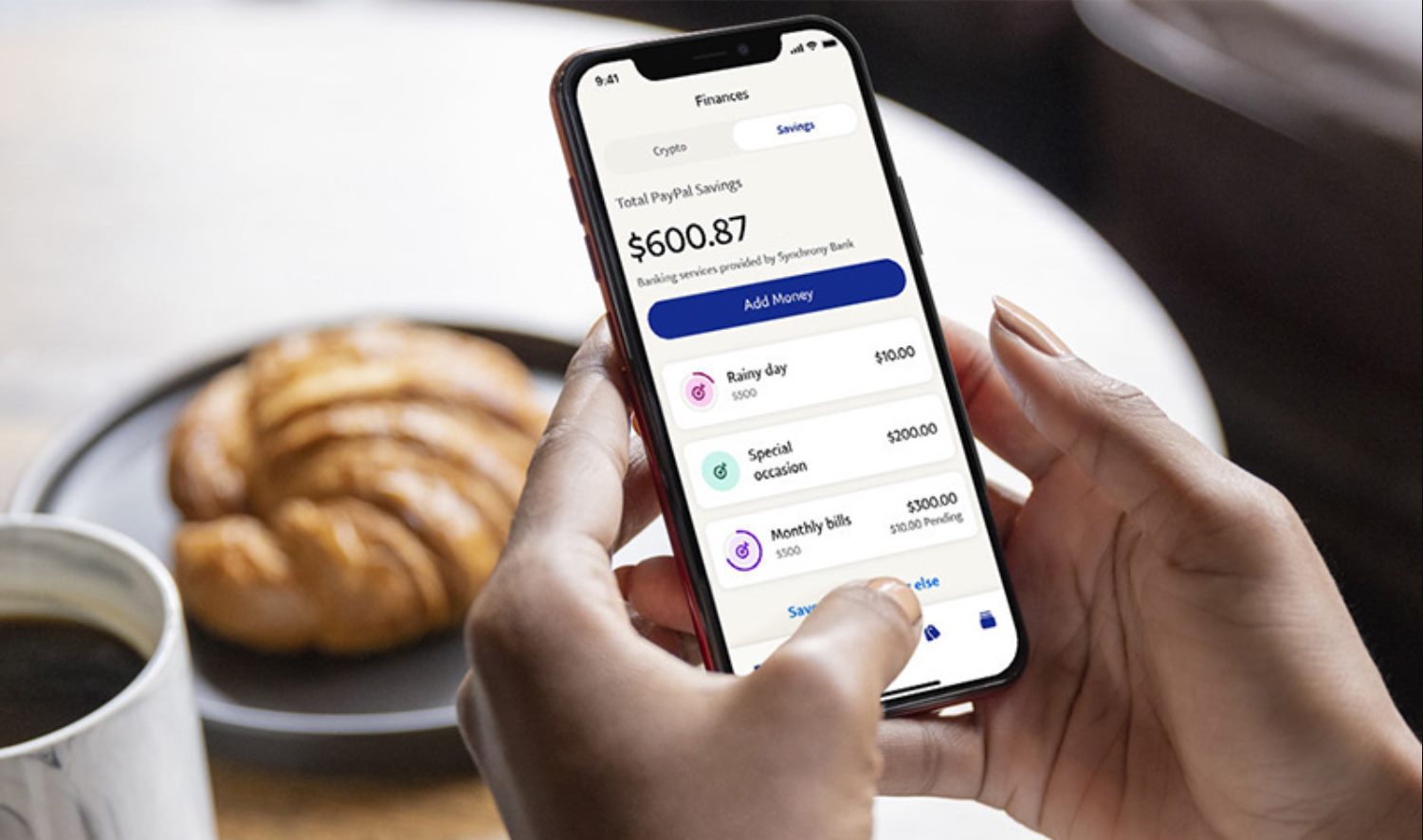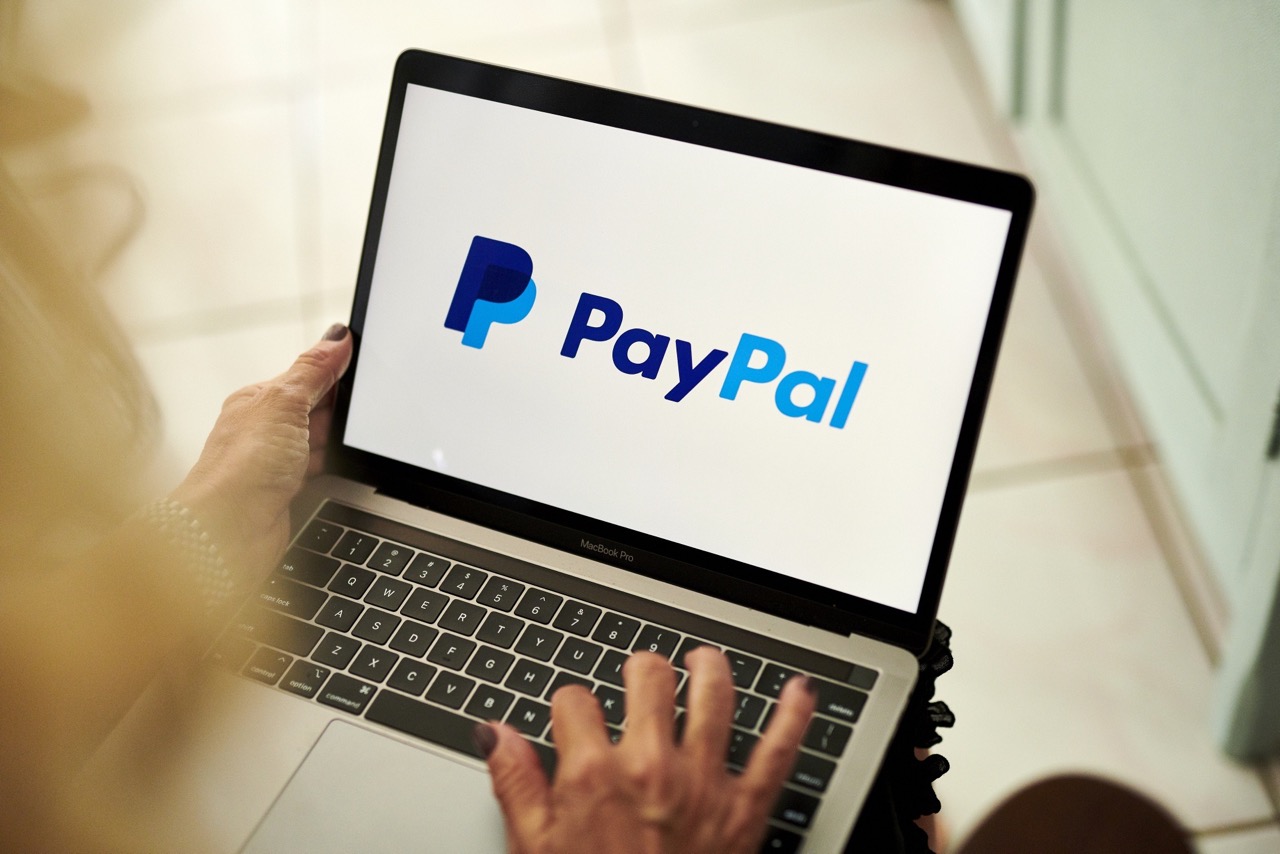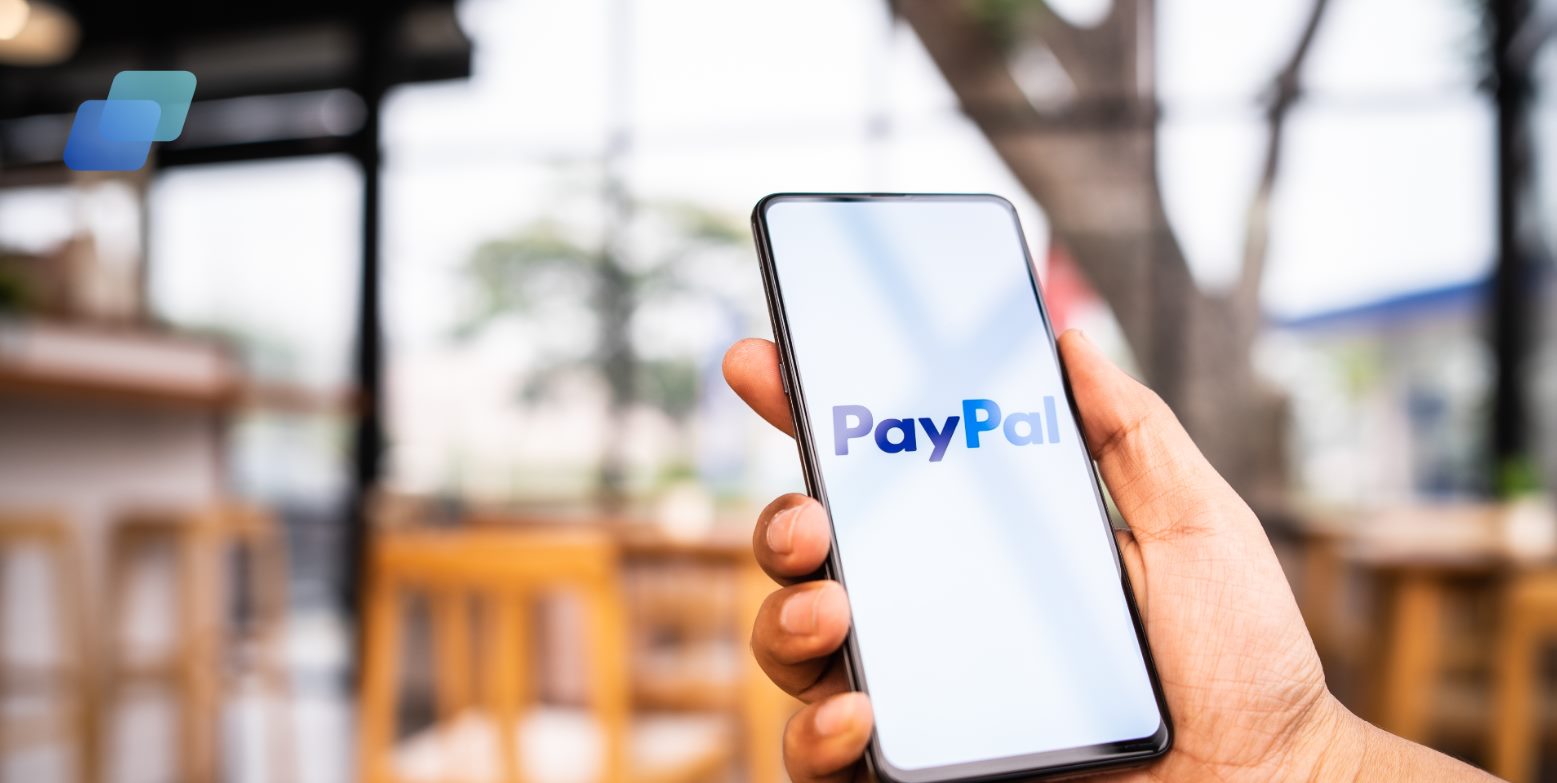Introduction
Do you want a secure and convenient way to receive and send money online? Look no further than PayPal!
PayPal is a leading online payment platform that enables individuals and businesses to transact securely and conveniently over the internet. With PayPal, you can make online purchases, receive payments from clients, or send money to family and friends without the need for traditional banking methods or sharing sensitive financial information. Whether you are a freelancer, an online entrepreneur, or simply someone who wants a hassle-free way to handle online transactions, PayPal is a trusted solution.
In this article, we will guide you through the process of setting up a PayPal account, linking it to your bank account, verifying your account, and using the various features and functions of PayPal. We will also provide you with useful tips to ensure the security of your transactions and troubleshoot common issues that may arise.
Whether you are new to PayPal or just need a refresher on how to use it effectively, this article will provide you with all the information you need to navigate through the platform and get paid with ease.
So, let’s get started!
Setting Up a PayPal Account
Before you can start using PayPal, you’ll need to set up an account. Follow these simple steps to get started:
- Go to the PayPal website (www.paypal.com) and click on the “Sign Up” button.
- Choose the type of account you want to create – Personal or Business. If you’re an individual looking to make online purchases or receive payments, select “Personal.” If you’re a business owner or plan to use PayPal for commercial purposes, select “Business.
- Enter your email address and create a secure password for your account. Make sure to choose a strong password that includes a combination of letters, numbers, and special characters to ensure the security of your account.
- Provide your personal information, including your name, address, and phone number. This information is necessary for PayPal to verify your identity and protect against fraud.
- Read and agree to the PayPal user agreement and privacy policy. Take the time to familiarize yourself with these documents to understand your rights and responsibilities when using PayPal.
- Complete the registration process by verifying your email address. PayPal will send a verification email to the address you provided. Click on the link in the email to confirm your email and activate your PayPal account.
Once you’ve completed these steps, congratulations! You now have a PayPal account that you can use to send and receive money online.
It’s important to note that PayPal may require additional information or documentation for account verification, especially if you plan to use it for business purposes or receive large amounts of money. Providing accurate information and complying with PayPal’s requirements will ensure a smooth and secure account setup process.
Next, let’s learn how to link your bank account to your PayPal account for seamless transactions.
Linking Your Bank Account
To fully utilize the features of your PayPal account, it’s important to link it to your bank account. This allows you to easily transfer funds between the two and withdraw money from PayPal when needed. Follow these steps to link your bank account:
- Sign in to your PayPal account and navigate to the “Wallet” section.
- Click on “Link a bank account” or “Add bank account,” depending on your account type and country.
- Provide the required information, including your bank account number, routing number (also known as the transit number), and account type (checking or savings).
- Review the information you provided and click on “Link Bank Account” or “Add Bank Account” to proceed.
- PayPal will initiate a verification process to confirm that the bank account you provided is legitimate and belongs to you. This process usually involves a small deposit into your bank account that you’ll need to verify later.
- Check your bank account for the deposit made by PayPal and make a note of the exact amount.
- Return to your PayPal account and navigate to the “Wallet” section. Click on “Confirm bank account” or a similar option.
- Enter the exact amount of the deposit made into your bank account. PayPal will verify your account by matching the amount you entered with the deposit.
- Once your bank account is confirmed, you can start using it for various transactions, including sending and receiving money, and withdrawing funds.
Linking your bank account to PayPal not only provides you with the convenience of seamless transactions but also allows you to withdraw funds from your PayPal balance directly to your bank account. This is especially useful when you want to access the funds in your PayPal account or when you receive payments that you want to transfer to your bank account.
Now that your bank account is linked to your PayPal account, let’s move on to the next section, where we’ll learn how to verify your PayPal account.
Verifying Your PayPal Account
Verifying your PayPal account is an important step to ensure the security and functionality of your account. A verified account provides added trust and credibility, both for buyers and sellers. Here’s how you can verify your PayPal account:
- Log in to your PayPal account and go to the “Settings” or “Profile” section.
- Click on “Verify” or a similar option to start the verification process.
- PayPal offers different methods of verification, depending on your country and account type. The most common method is linking and confirming a credit or debit card.
- Follow the on-screen instructions to link your card to your PayPal account. This usually involves providing the card number, expiration date, security code, and billing address associated with the card.
- Once the card is linked, PayPal will initiate a small charge (typically less than a dollar) to your card. This charge is temporary and will be refunded to your card account.
- Check your card statement for the charge made by PayPal. Note the exact amount that was charged.
- Return to your PayPal account and navigate to the verification section. Enter the exact amount charged to your card to confirm it.
- Once the verification is successful, PayPal will notify you, and your account will be marked as verified.
Verifying your PayPal account not only helps build trust with other PayPal users but also removes certain limitations on your account, such as sending and receiving higher amounts of money. It also provides an additional layer of security for your transactions.
Keep in mind that PayPal may require additional verification steps for certain types of accounts or transactions. This can include providing proof of identity, address, or business documentation. It’s important to comply with these requirements to ensure the smooth and uninterrupted use of your PayPal account.
Now that your PayPal account is verified, we’ll move on to the next section, where we’ll learn how to send money using PayPal.
How to Send Money
Sending money with PayPal is a breeze. Whether you need to pay for an online purchase or send money to a friend or family member, PayPal makes it quick and simple. Here’s how you can send money using PayPal:
- Log in to your PayPal account and navigate to the “Send & Request” or “Send Money” section.
- Enter the email address or mobile number of the recipient. If the recipient is already in your PayPal contacts, you can simply select their name from the list.
- Choose the currency and enter the amount you want to send. You can also add a note or memo for the recipient’s reference.
- Review the details of your transaction and click on “Send” to complete the payment.
- If you have multiple payment methods linked to your PayPal account, such as a bank account and a credit card, you can choose the preferred method for the transaction.
- PayPal will send an email notification to both you and the recipient, confirming the payment.
One of the advantages of using PayPal to send money is that it offers buyer and seller protection. This means that if you are purchasing goods or services and encounter any issues or disputes, PayPal can help resolve the situation and provide a refund, if necessary.
In addition to sending money to individuals, PayPal also offers options for making payments to merchants and online businesses. You can easily make purchases from thousands of websites that accept PayPal as a payment method, simply by logging in to your PayPal account at checkout and authorizing the payment.
Now that you know how to send money using PayPal, let’s move on to the next section, where we’ll explore how to receive money through PayPal.
How to Receive Money
Receiving money through PayPal is simple and convenient. Whether you’re selling products or services online, receiving payments from clients, or collecting money from friends and family, PayPal provides an easy way to receive funds securely. Here’s how you can receive money through PayPal:
- Share your PayPal email address or mobile number with the person or business from whom you are expecting to receive the payment.
- Once the payment is sent, PayPal will notify you via email or an app notification.
- If the payment is for goods or services, PayPal will provide the necessary details, including the amount paid and any additional information provided by the sender.
- The received funds will be added to your PayPal account balance, which you can access and manage through your PayPal account.
- You can choose to keep the funds in your PayPal account for future purchases or withdraw the money to your linked bank account.
PayPal offers various options for managing the funds you receive. You can use the balance to make online purchases, send money to others, or transfer the funds to your bank account for easy access.
If you’re a seller or business owner, PayPal also provides tools and features to help you manage your business finances. You can create and send professional invoices to your clients, track payments and sales, and generate reports to keep a record of your transactions.
Receiving money through PayPal offers additional benefits such as buyer and seller protection. As a seller, PayPal helps protect you against unauthorized transactions or fraudulent buyers, giving you peace of mind when conducting business online.
Now that you know how to receive money through PayPal, let’s move on to the next section, where we’ll discuss how to request a payment from someone.
Requesting a Payment
Need to collect payment from someone? PayPal makes it easy to request money owed to you. Whether you’re splitting expenses with friends or invoicing a client, requesting a payment through PayPal is a straightforward process. Here’s how you can request a payment:
- Log in to your PayPal account and navigate to the “Send & Request” or “Request Money” section.
- Enter the email address or mobile number of the person from whom you are requesting payment.
- Specify the currency and amount you want to request. You can also add a note or description to provide context or details about the payment.
- Review the details of your payment request and click on “Request” to send the request.
- The recipient will receive an email notification from PayPal, informing them of your payment request.
- The recipient can then log in to their PayPal account and choose to accept or decline the payment request.
Requesting a payment through PayPal provides a convenient way to remind others of their outstanding payments and streamline the repayment process. It eliminates the need for traditional methods like writing checks or making direct bank transfers.
Moreover, PayPal allows you to keep track of your transactions by providing a record of all the payment requests you have sent and the status of each request. This feature is particularly useful for tracking payments owed to you and managing your finances.
Whether you’re a freelancer, a small business owner, or simply looking to split expenses, PayPal’s request payment feature simplifies the process and ensures a smooth and transparent payment experience.
Now that you know how to request a payment through PayPal, let’s move on to the next section, where we’ll explore how to withdraw funds from your PayPal account.
Withdrawing Funds from PayPal
Once you have funds in your PayPal account, you may want to withdraw them for various purposes. Whether you want to transfer money to your bank account or use an alternative method, PayPal offers flexibility when it comes to withdrawing funds. Here’s how you can withdraw funds from your PayPal account:
- Log in to your PayPal account and navigate to the “Wallet” or “Balance” section.
- Click on “Withdraw” or a similar option to initiate the withdrawal process.
- Choose the preferred withdrawal method. PayPal offers various options, including transferring funds to your linked bank account, requesting a check, or using a PayPal-branded debit card.
- If you select the bank transfer option, enter the amount you want to withdraw and confirm the details.
- Review the withdrawal details and click on “Continue” or a similar option to complete the process.
- PayPal will process the withdrawal request, and the funds will be transferred according to the selected method. The processing time may vary depending on the withdrawal option chosen.
Withdrawing funds from your PayPal account allows you to access the money you’ve received or accumulated. It’s especially useful when you want to transfer funds to your bank account for everyday expenses or make cash withdrawals.
PayPal offers flexibility in terms of withdrawal options, allowing you to choose the method that suits your needs and preferences. Keep in mind that certain withdrawal methods may have associated fees, and processing times can vary. It’s essential to review and understand any applicable fees and terms before initiating a withdrawal.
If you prefer to keep the funds within your PayPal account, you can also use them for online purchases, send money to others, or even invest in eligible financial products offered by PayPal.
Now that you know how to withdraw funds from your PayPal account, let’s move on to the next section, where we’ll discuss the fees and charges associated with PayPal transactions.
PayPal Fees and Charges
While using PayPal offers convenience and security, it’s important to understand the fees and charges associated with certain transactions. Here’s an overview of the fees and charges you may encounter when using PayPal:
1. Sending and Receiving Money:
Generally, there are no fees for sending money to family or friends using a PayPal balance or linked bank account. However, if you use a credit or debit card to send money, or if you’re involved in a commercial transaction, PayPal may charge a transaction fee based on the amount sent or received. It’s advisable to review PayPal’s fee schedule for detailed information.
2. Currency Conversion:
If you send or receive money in a currency different from your PayPal account’s currency, PayPal will apply a currency conversion fee. This fee is typically a small percentage of the transaction amount and helps cover the costs associated with currency conversion.
3. Withdrawing Funds:
When withdrawing funds from your PayPal account to your linked bank account, PayPal generally does not charge a fee. However, keep in mind that your bank may impose its own fees for receiving transfers.
4. Receiving Payments for Goods and Services:
If you’re a seller or business owner receiving payments for goods or services through PayPal, you may be subject to a transaction fee. The fee is usually a percentage of the total transaction amount, and it can vary depending on the country and type of transaction.
It’s important to review the current fee structure provided by PayPal on their website, as fees and charges may be subject to change. Familiarizing yourself with the fees ensures transparency and allows you to factor them into your financial planning.
In addition to transaction fees, PayPal may also offer optional paid services such as PayPal Payments Pro or PayPal Here, which may involve additional costs. These services provide advanced features and functionality for businesses and individuals who require a more robust payment solution.
To avoid any surprises or misunderstandings, it’s recommended to review PayPal’s fee schedule and policies and consult the terms and conditions of specific services before using them.
Now that you’re aware of PayPal’s fees and charges, let’s move on to the next section, where we’ll share some security tips for using PayPal.
Security Tips for Using PayPal
When it comes to financial transactions, prioritizing security is crucial. By following these security tips, you can help protect your PayPal account from unauthorized access and ensure a safe and secure experience:
1. Use a Strong and Unique Password:
Create a password for your PayPal account that is strong, unique, and not easily guessable. Include a combination of uppercase and lowercase letters, numbers, and special characters. Avoid using common passwords and update your password regularly to minimize the risk of unauthorized access.
2. Enable Two-Factor Authentication:
Add an extra layer of security to your PayPal account by enabling two-factor authentication. This requires you to enter a unique verification code sent to your mobile device or email in addition to your password when logging in.
3. Be Wary of Phishing Attempts:
Be cautious of emails, messages, or websites that appear to be from PayPal but ask for your login credentials or personal information. PayPal will never ask you to provide sensitive information via email. Always verify the legitimacy of any PayPal communication before clicking on links or providing information.
4. Keep Your Devices and Software Updated:
Ensure that your devices, including computers and mobile devices, have the latest security updates and patches installed. Regularly update your web browsers, operating systems, and antivirus software to protect against vulnerabilities that could be exploited by malicious actors.
5. Check for Secure HTTPS Connection:
When accessing PayPal’s website or making transactions, always look for the “https://” prefix in the URL. The “s” indicates a secure connection, encrypting your data and helping to prevent interception by third parties.
6. Monitor Your Account Activity:
Regularly review your PayPal account activity to identify any suspicious transactions or unrecognized charges. If you notice any unauthorized activity, report it to PayPal immediately.
7. Beware of Suspicious Links or Attachments:
Avoid clicking on links or downloading attachments from suspicious sources. These could contain malware or phishing attempts designed to compromise your PayPal account. Always verify the source and legitimacy of any links or attachments before interacting with them.
8. Protect Personal and Financial Information:
Avoid sharing your PayPal login credentials, financial information, or other sensitive data with anyone. PayPal will never ask you for this information via email, and it’s important to keep it confidential to minimize the risk of unauthorized access to your account.
By incorporating these security practices into your PayPal usage, you can enhance the protection of your account and maintain the confidentiality and integrity of your financial transactions.
Now that you’re equipped with security tips, let’s move on to the next section, where we’ll address common PayPal issues and provide troubleshooting tips.
Common PayPal Issues and Troubleshooting Tips
While PayPal is generally a reliable platform, occasionally users may encounter certain issues. Here are some common PayPal issues and troubleshooting tips to help you address and resolve them:
1. Payment Delays:
If you’re experiencing delays in receiving or sending payments, there could be various factors at play. Firstly, ensure that your PayPal account is verified and that you have completed any necessary steps for verification. Additionally, check if the recipient’s email address is correct and confirm that they’ve provided the correct transaction details.
2. Unauthorized Transactions:
If you notice any unauthorized transactions on your PayPal account, take immediate action. Report the issue to PayPal and follow their instructions to secure your account. PayPal offers strong buyer and seller protection, which can help you resolve unauthorized transaction issues and recover any lost funds.
3. Account Limitations or Restrictions:
In certain cases, PayPal may impose limitations or restrictions on an account. This can happen for various reasons, such as suspected fraud or unusual account activity. If you encounter account limitations, contact PayPal’s customer support for assistance. They will guide you through the process of resolving the issue and lifting any restrictions on your account.
4. Payment Disputes:
If you’re involved in a payment dispute, such as an item not being received or not matching the description, communicate your concerns with the seller first. Attempt to resolve the issue amicably. If an agreement cannot be reached, you can escalate the dispute to PayPal’s resolution center. PayPal will review the case and help facilitate a resolution between the parties involved.
5. Technical Glitches:
If you encounter technical issues while using PayPal, such as the website not loading or error messages appearing, try clearing your browser cache and cookies. If the problem persists, try using a different browser or device to access your account. Should the issue still persist, contact PayPal’s technical support for further assistance.
6. Refunds and Returns:
If you’re a seller and need to process a refund or handle return requests, familiarize yourself with PayPal’s refund policies and procedures. Ensure that you communicate with the buyer promptly and follow the appropriate steps outlined by PayPal for issuing refunds or handling returns.
7. Incorrect Account or Personal Information:
If you’ve noticed any errors in your PayPal account or personal information, such as your name, address, or contact details, update them immediately. Keeping your account information accurate and up to date helps ensure smooth and seamless transactions.
If you encounter any persistent issues or require further assistance, reach out to PayPal’s customer support. Their knowledgeable and dedicated support team can provide personalized assistance to address any concerns you may have.
By being proactive and engaging in effective troubleshooting, you can overcome common PayPal issues and enjoy a seamless and hassle-free experience on the platform.
Now that you have insight into dealing with common PayPal issues, let’s summarize what we’ve covered in this article.
Conclusion
PayPal is a trusted and convenient platform for sending, receiving, and managing online payments. By following the steps outlined in this article, you can set up and verify your PayPal account, link it to your bank account, and navigate various features like sending and receiving money, requesting payments, and withdrawing funds. Additionally, we’ve provided tips on staying secure while using PayPal and troubleshooting common issues.
Remember to review PayPal’s fees and charges to ensure you’re aware of any applicable costs. Stay vigilant and protect your account by following recommended security practices, such as using strong passwords and enabling two-factor authentication.
If you encounter any issues, PayPal’s customer support is available to assist you. They can provide personalized guidance and help resolve any concerns or disputes that may arise.
By leveraging the simplicity and security of PayPal, you can enjoy a seamless and efficient experience when it comes to online transactions. Whether you’re a freelancer, business owner, or simply an individual looking for a secure way to send and receive money online, PayPal is a reliable solution.
Now that you’re equipped with the knowledge and tools to use PayPal effectively, go ahead and make the most of this versatile payment platform. Start sending and receiving money with ease, knowing that your transactions are backed by the trusted and robust PayPal system.
Happy transacting with PayPal!







